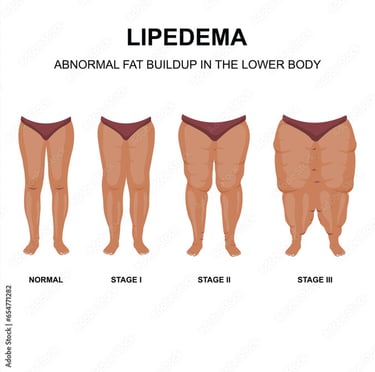Is it Lipedema?
Lipedema is a chronic condition that often goes undiagnosed or misdiagnosed, leaving many women searching for answers. Doctors assume that 11-12% of the world's population of women suffer from it! But how many more actually have lipedema and have never even heard of the condition? Characterized by a disproportionate buildup of fat—most commonly in the hips, thighs, buttocks, and sometimes arms—lipedema is distinct from general obesity or lymphedema. Early recognition is essential, as timely management can improve quality of life and help prevent progression. Diagnosis typically begins with a detailed medical history and physical examination. Physicians look for hallmark features, such as symmetrical swelling in the lower body, a clear distinction between affected and unaffected areas (often stopping at the ankles or wrists), tenderness or pain in the fatty tissue, and a tendency to bruise easily. Unlike standard weight gain, lipedema fat is resistant to diet and exercise, which can further complicate recognition. Currently, there is no specific test; diagnosis is made clinically, often by a specialist familiar with lipedema, such as a vascular surgeon, dermatologist, or lymphatic expert. Imaging studies like ultrasound or MRI may sometimes be used to rule out other conditions. But some telltale signs might mean you have it: disproportionate weight gain, frequent unexplained bruising, a feeling of swelling or heaviness in the legs or arms, or resistant weight gain in the legs or arms. You can do a "pinch test" on yourself; grab a three-finger size area of fat on your legs or arms where you are affected. If the fat bunches up and looks bumpy "like a bag of frozen peas", it is most likely lipedema. Raising awareness about lipedema helps more people seek an accurate diagnosis, reducing the frustration of years spent without answers and opening the door to supportive care and treatment options.
9/30/20251 min read

